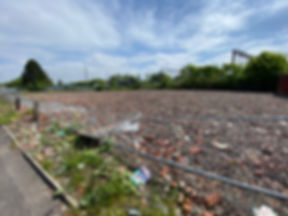top of page

A fascination for decay
September 23rd, 2024
In revisiting the roots of this project, I’m reminded that its beginnings reach back further than the formal start of my PhD. The first time I came to Paisley was in 2018, during my MA in Cultural Diplomacy and International Events. I lived at the Storie Street residences at studied at the University of the West of Scotland, before completing the second half of the degree in Berlin. Arriving in Scotland for the first time was a cultural shock, heightened by the visible signs of post-industrial decline across many towns. Despite feeling out of my depth, I grew to love my time in Paisley and graduated in 2019. The relationships I built during that year, especially with my fellow classmates and my professors at UWS, became the foundation upon which this PhD was later built.
When I was accepted back at UWS with a funded studentship to research decay and creative engagement, I was ecstatic. And yet, over the course of this project, I’ve often asked myself what it is about decay that resonates so deeply with me. Was this fascination always there? And if so, what does it reveal about my own perspective?
Looking back, I realise that my interest in decaying spaces was seeded during my childhood, especially during the summers spent in a small village in Spain’s Priorat region. Our family home there became a seasonal refuge – a place of simplicity, routine and freedom. My sister and I would roam the village square until nightfall, playing games with other children, anchored by a big cross statue near the bus stop that became our unofficial meeting point. The village, dotted with crumbling buildings and abandoned sites, became our playground. Among them was an old school we once cleaned up with nothing but Cillit Bang, briefly transforming it into a hangout before the council shut it down. Though the building has since been redeveloped, many other decaying structures remain, their empty shells testifying to a different time.
To us as children, these spaces weren’t threatening. They sparked our imaginations, sometimes mysterious, sometimes magical. The decay did not repel us; it drew us in, offering hiding spots, ghost stories and even unexpected companions (like the kittens we cared for one summer). These places were part of our everyday landscape – lived-in, loved and full of possibility.
While those experiences predate this research, they help explain the emotional and intellectual threads that led me here. The rest of this chapter offers a collection of stories from my PhD fieldwork: moments of discovery, frustration, connection and doubt. They chart how I, as a short-term residents, a Dutch-Spanish research and a researcher in Paisley have come to experience the town – not only through the lens of decay, but through the people, places and participatory encounters that have shaped this project from within.

Cross statue in El Lloar, Spain (source: author 2024).
bottom of page